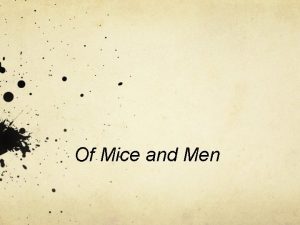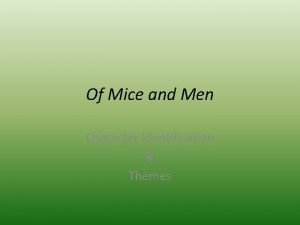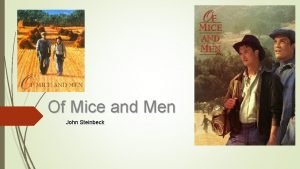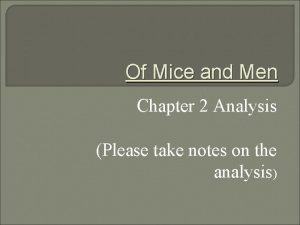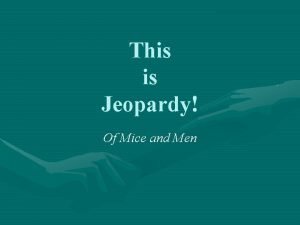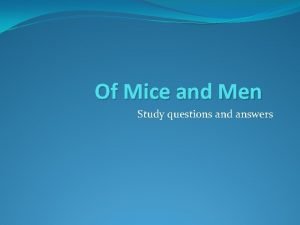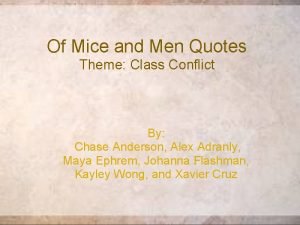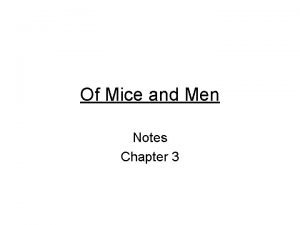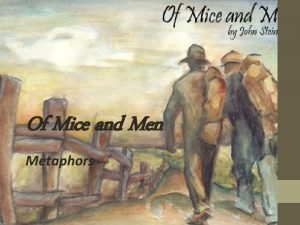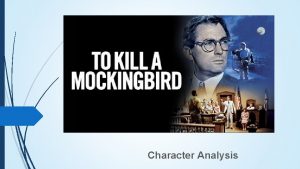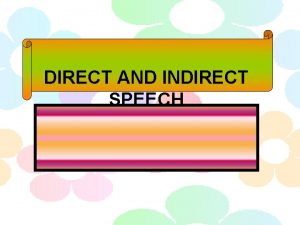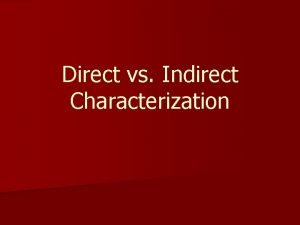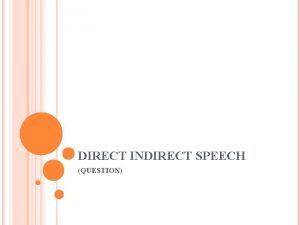Of Mice Men Character Analysis Direct vs Indirect










- Slides: 10

Of Mice & Men Character Analysis

Direct vs. Indirect Characterization Direct Characterization: the writer makes direct statements about a character’s personality and tells what the character is like. Example: “The patient boy and quiet girl were both well mannered and did not disobey their mother. ”

Direct vs. Indirect Characterization: the writer reveals information about a character and his or her personality through that character’s thoughts, words, and actions, along with how other characters respond to that character, including what they think or say about him or her. STEAL: Speech, thoughts, effect on others, actions, looks.

Protagonist The most important or leading character; usually the hero or heroine, but not always.

Antagonist The character pitted against the protagonist. An evil or cruel antagonist is a villain but the antagonist is not always a villain.

Round Characters Fully developed like real people with fullblown personalities.

Flat Characters Two dimensional, relatively uncomplicated and do not change throughout the course of a work.

Static Characters Do not change significantly during the course of a work.

Dynamic Characters Do change (for better or worse) in response to circumstances

Character Analysis Assignment EXAMPLE: 1. The Boss Quality – organized (suspicious) Flat Character Textual proof: “He pulled his time book out of his pocket and opened it where a pencil was struck between the leaves… The boss licked his pencil” (Steinbeck 21). Explanation: The boss has just arrived and met Lennie and George. He is checking on his new men. Here he enters their names into his book. He makes sure that he writes down exactly what time the men will start working. He listens to why they have missed their ride to the field. He keeps track of who is working for him and when in his book. These actions show that he is an organized man as he has record of who is working for him and when.
 Steinbeck's letter about curley's wife
Steinbeck's letter about curley's wife Of mice and men characters
Of mice and men characters Main theme in of mice and men
Main theme in of mice and men Candy of mice and men-character personality traits quotes
Candy of mice and men-character personality traits quotes Of mice and men chapter 2 questions
Of mice and men chapter 2 questions Of mice and men jeopardy
Of mice and men jeopardy Of mice and men webquest
Of mice and men webquest What is candy's opinion of curley's wife
What is candy's opinion of curley's wife Conflict in mice and men
Conflict in mice and men Of mice and men figurative language
Of mice and men figurative language Allegory in of mice and men
Allegory in of mice and men
